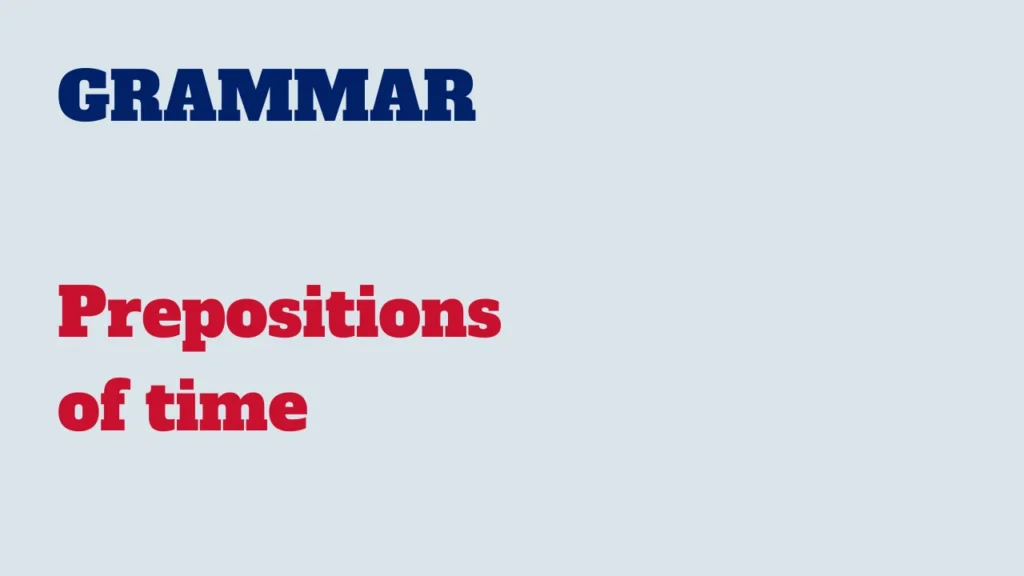Prepositions of time are words that help specify when an action takes place. They indicate the relationship between the action and the time it occurs.

Here are some common prepositions of time and how to use them:
Common prepositions of time:
At:
Used to specify a particular point in time.
Example:
I have a meeting at 9 AM.
In:
Used to indicate a period of time, month, season, or year.
Example:
She will return in a week.
On:
Used for specific days and dates.
Example:
We have a party on Friday.
They will get married on the 1st of December.
By:
Indicates the deadline for completing an action.
Example:
Please finish your homework by tomorrow.
For:
Indicates the duration of an action.
Example:
They will be on vacation for two weeks.
Since:
Used to specify the starting point of an action.
Example:
She has been working here since January.
During:
Used to indicate the time within which an action occurs.
Example:
We met during the summer.
Throughout:
Indicates that an action continues for the entire duration.
Example:
The fireworks continued throughout the night.
Usage of prepositions of time:
At:
Specific times of the day.
Example:
At noon, we have lunch.
In:
Months, years, seasons, and longer periods.
Example:
It’s colder in winter.
On:
Days and specific dates.
Example:
We have a meeting on Monday.
By:
Indicates a deadline.
Example:
Please submit your report by Friday.
For:
Expresses duration.
Example:
They have been married for ten years.
Since:
Specifies the starting point of an action.
Example:
I have known her since college.
During:
Points to a time within a larger time frame.
Example:
He fell asleep during the movie.
Throughout:
Denotes continuous action over an entire period.
Example:
She played music throughout the evening.
Understanding and using prepositions of time correctly will enhance your ability to communicate specific details about when events occur. Practice incorporating these prepositions into your sentences to strengthen your language skills. Happy learning!



